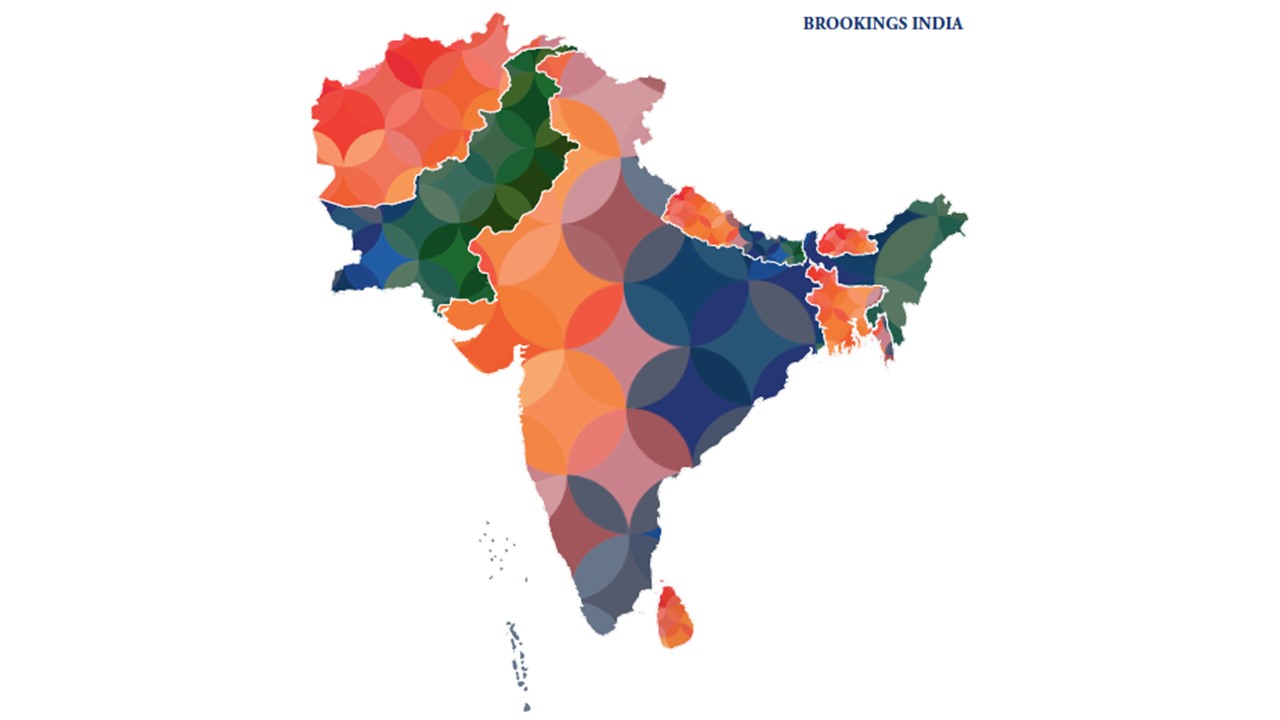Content from the Brookings Institution India Center is now archived. After seven years of an impactful partnership, as of September 11, 2020, Brookings India is now the Centre for Social and Economic Progress, an independent public policy institution based in India.
The use of outer space, notably through satellites, for communications, weather forecasting, and remote sensing has long been recognized as imperative for development and the SAARC region is no exception. Yet, with the exception of India, individual SAARC countries have been woefully inadequate in exploiting space-based assets. Presently only four of SAARC’s members – India, Pakistan, Sri Lanka and, most recently, Afghanistan – operate satellites. While Bangladesh does not have satellites, its Space Research and Remote Sensing Organisation uses Japanese and American satellites, to monitor weather and water resources. Moreover, the Maldives, Nepal and Bhutan have no access to satellites and no space program to speak of.
A 2011 SAARC Disaster Management Centre report lamented that the present observational network in South Asia [including space-based assets] is merely 20 to 30 percent of the optimal observation network suggested by the World Meteorological Organization for tropical regions. While SAARC’s desire for cooperation on meteorology, hydrology, oceanography, seismology, and atmospheric studies as well as the SAARC Meteorological Research Centre, established in 1995, are reliant on satellite-based data, this has not translated into a dedicated SAARC satellite or indeed regional cooperation on outer space. Any cooperation sharing satellite data remains bilateral. Although a SAARC satellite was first mooted in 1998 it came to naught.
Against this backdrop Prime Minister Narendra Modi’s oft-repeated proposal for a SAARC satellite, and by extension greater cooperation on outer space issues, falls on fertile ground.
Apart from enhancing cooperation to benefit SAARC members for a variety of development and disaster mitigation and management objectives, greater space cooperation would also serve India in several other ways. First, it would strengthen India’s stature as a space-faring nation. While India is already a major space player taking on a leadership role in the region will only strengthen its credentials both regionally and globally. Second, India’s contribution to SAARC’s satellite and space needs would also tie its neighbors more closely with its space policy and strengthen New Delhi’s hand in shaping an international space regime. Finally, almost all of India’s neighbors who are seeking space assets are inevitably turning to China to build or launch their satellites. By offering these options to its neighbors and taking the lead in building a SAARC constellation of stars, India could also check the inroads of China’s “string of pearls” and maritime silk route” in South Asia.
There are three ways in which India could lead the process to create SAARC’s constellation of stars. First, it could offer to provide data (in real time or after processing it) to all SAARC members from its existing satellites. In addition, it could also offer a transponder to provide SAARC-wide communications particularly in the case of natural disasters. This might necessitate the building of earth stations to receive the signal from satellites, particularly in countries where they do not exist. Here, India could offer to build these as part of its commitment to SAARC.
One example of offering the services of an existing constellation to SAARC members would be the seven-spacecraft based Indian Regional Navigational Satellite System (IRNSS – a mini Global Positioning System (GPS) covering South Asia), which is expected to become operational by 2015. Based on the IRNSS, the Indian Space Research Organisation has developed a GPS-Aided Geo Augmented Navigation (GAGAN) system to assist civilian aircraft for navigation and non-precision approaches over Indian airspace; GAGAN could also be offered to all aircraft operating within SAARC airspace.
Second, build, launch and operate a dedicated SAARC satellite for all members. Such a satellite could either be a multipurpose communication, weather monitoring and remote sensing satellite (like the first generation Indian satellites), or a dedicated single-purpose satellites (like the Indian remote sensing satellites). Experts have argued in favor of the latter and propose an Earth observation satellite as the first SAARC satellite. Such a satellite would be useful to better manage land and water resources in the entire region and could become part of trans-border efforts to control floods and drought.
Third, create a South Asian space agency – along the lines of the European Space Agency (ESA) – to pool resources (technical and monetary); to ameliorate costs; and to create a common space program for the region. Such an agency would still be dominated by India (just as France is the lead actor in the ESA) but would also benefit from region-wide funding, expertise and demand.
Clearly, India has more to gain than lose from establishing SAARC’s constellation of stars. Modi’s call is not a flight of fancy but an opportunity for India to ensure that even the sky is not the limit for SAARC.
_______________________________________________________________________________
This chapter is a part of Brookings India’s briefing book, “Reinvigorating SAARC: India’s Opportunities and Challenges.” To view the preface and table of contents, click here.
***
W.P.S. Sidhu is senior fellow for foreign policy at Brookings India in New Delhi and the Brookings Institution. Sidhu’s research focuses on India’s role in the emerging global order; the role of the United Nations and regionalism; and confidence-building measures, disarmament, arms control, and non-proliferation issues.
Rohan Sandhu is research assistant at Brookings India, where he conducts research in the areas of international development and political economy – including education, democracy, poverty, and Indian foreign policy.
_______________________________________________________________________________


